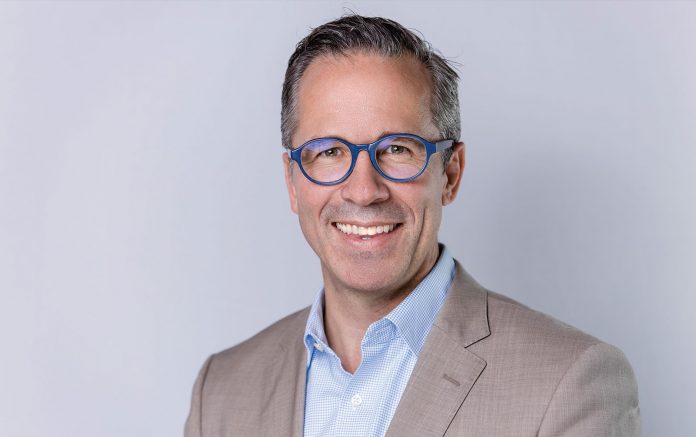By Brendon Stiles, MD
Posted: June 10, 2020
Imagine living in a city with more than 180,000 reported cases of COVID-19 and more than 24,000 deaths. Next imagine asking your patients with lung cancer to come into the heart of that city, to a hospital that has cared for hundreds of those patients infected with COVID-19. That is the situation here in New York City and at Weill Cornell’s campus of New York- Presbyterian Hospital. Given the sobering early reports of higher mortality rates in patients with cancer with COVID-19, it actually became our duty not to put our patients with lung cancer in harm’s way and to ask them to stay away.
To that extent, we pivoted hard towards telehealth. Fortunately, we already had a remarkable system in place through Epic and our electronic medical record. Weill Cornell Medicine, our Emergency Department in particular, has been a leader in telehealth training over the past few years. We have a Center for Virtual Care that trains physicians and students in “web-side” manner. This includes the basics of how to present yourself online, how to effectively interact with patients, and the skills needed to examine patients remotely. Through training modules and simulations with standardized patients, trainees can learn how to make and convey treatment-related decisions empathetically while using virtual media. Although I confess that I have never taken any of these courses or modules, having an established focus and process already in place made my transition to telehealth very smooth. In fact, our entire Department of Cardiothoracic Surgery has pivoted to telehealth. For the first week in March, prior to the declaration of the COVID-19 pandemic, only 2.1% of our outpatient clinic visits were virtual. Contrast that with the first week in April, in which 74% of our outpatient encounters were through telehealth. That is a remarkable transition.
Acknowledging Barriers, Maintaining Connections
Despite having a good system in place, telehealth can be tricky and takes some getting used to. It may not be for everyone, so I don’t force it on all patients, but rather I give them the option. I understand that virtual interactions may amplify disparities such as those induced by language differences, access to technology, or patient age. At the same time, however, those barriers are often present when I see patients physically. In addition, the financial and time strain of getting in and out of a busy hospital should not be underestimated, particularly for patients who live remotely or for the elderly. Telehealth takes that burden off of patients and offers the potential to decrease, rather than widen, healthcare disparities. I have seen that in my practice already. The patients clearly appreciate that aspect.
Of course virtual medicine is different from face-to-face medicine. In particular, I am a “touch the patient” person, whether it is a firm handshake, a hand on the shoulder while listening to their lungs, or a hug when good news is delivered. It is who I am as a doctor, habits that are hard but necessary to break in the current environment. I worried how I would connect with patients virtually, new patients in particular. I learned quickly that many of the same things are important as in the pre-COVID era—eye contact, smiles, and asking patients about things other than their illness. The televisits in particular offer up the potential to see patients in their own environment and to break the tension by commenting on little visual cues—a picture in the background, the pet walking in and out, kids or other family members sticking their heads in. Taking a moment to acknowledge those types of things humanizes the visit. Enabled by those tools, I have done things that I would have thought impossible by telehealth such as examining a postoperative incision, telling a patient about a biopsy positive for lung cancer, and the worst—telling a young never-smoker that her PET scan looks like she has metastatic lung cancer. Those were hard to do virtually, but the right thing for each of these patients in the circumstances.
Undoubtedly when we get back to a new normal, there will be times when I will want to see patients face-to-face to deliver news or to examine them, particularly my new preoperative patients. I suspect, however, that many patients will be comfortable with and prefer telehealth. Certainly my patients with lung cancer on surveillance can predominantly pivot to virtual visits. These patients navigate New York City to come in for their yearly scan, are stuck in the waiting room with other patients, and generally get to see me for just 5-10 minutes, during which I usually tell them that their scans are ok and that I will see them again next year. We can certainly do that over telehealth, ensure that they are well, and still maintain our personal connection.
In conclusion, my experience with telehealth has been positive. Adopting it into my practice was sped up by the necessity of the COVID-19 pandemic, but it is a change to my practice that I believe is here to stay. Some of that will likely be due to the same necessity of COVID-19. However, I anticipate that some will be due to patient demand for telehealth as we continue to refine it and as we make the experience even better for patients. ✦
About the Author: Dr. Stiles is a thoracic surgeon at NewYork-Presbyterian Hospital and an Associate Professor of Cardiothoracic Surgery at Weill Cornell Medicine, New York- Presbyterian Hospital. He is a member of both the IASLC Communications Committee and the ILCN Editorial Group. Follow Dr. Stiles on Twitter @BrendonStilesMD.












